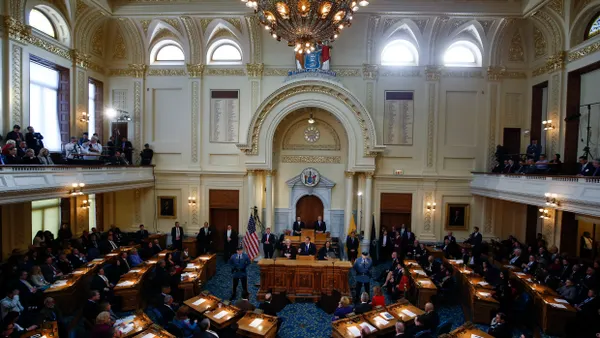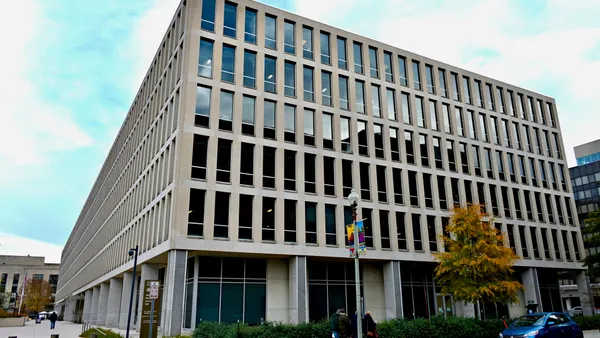Dive Brief:
- Core inflation, which excludes volatile food and energy prices, rose at a 3.1% annual rate last month after a 2.9% gain in June, with a resurgence in the cost of services including transportation and medical care fueling much of the gain, according to Labor Department data released Tuesday.
- Broader headline inflation was less misaligned with the Federal Reserve’s 2% long-term inflation target, rising at a 2.7% annual rate – the same pace as in June. A 3.7% annual gain in shelter prices was the primary force behind the increase, the Labor Department said.
- “July CPI was not so good, after a couple of better months in May and June,” Fitch Ratings Chief Economist Brian Coulton said in an email. Yet with economic growth slowing, consumer spending softening and hiring cooling during the past three months, “the chances of a September rate cut have increased,” Coulton said, referring to a scheduled meeting of Fed policymakers Sept. 16-17.
Dive Insight:
Despite the higher-than-forecast price pressure data, traders in interest rate futures on Tuesday held to their bet that the central bank will trim the federal funds rate next month from the current range between 4.25% and 4.5%.
Responding to the inflation news, traders raised the odds of a quarter-point rate cut in September to 94% from 86% yesterday, according to the CME FedWatch Tool.
Weakness in the labor market compelled two Fed governors to dissent from a central bank decision last month to hold the federal funds rate steady for the fifth straight meeting. They called for a quarter-point cut.
Other Fed officials, while not yet supporting a reduction in borrowing costs, have recently voiced concern about the cooling labor market and signs of faltering consumer spending, which drives nearly 70% of economic growth.
“Real consumer spending has all but stalled in recent months,” Richmond Fed President Tom Barkin said Tuesday in a speech. “Consumers, exhausted from four years of above-target inflation and tired of high prices, are trading down.”
Meanwhile, gross domestic product growth slowed from 2.5% in 2024 to a 1.2% annual rate during the first half of this year, and the job market has faltered this summer, with the average in payroll gains during the most recent three months slumping to 35,000 from 127,000 during the February through April period, Barkin noted.
In addition, “companies are set to raise prices further in the context of increased tariffs,” Barkin said, while noting that consumers “are more willing to defer purchases if prices go up.”
Yet the outlook for the labor market and inflation is currently too murky to prompt a change in Fed policy, he said.
“We may well see pressure on inflation, and we may also see pressure on unemployment, but the balance between the two is still unclear,” Barkin said.
Kansas City Fed President Jeffrey Schmid backed current monetary policy, saying “inflation remains too high, and therefore policy should remain modestly restrictive.”
Referring to the Fed’s mandate to ensure full employment, Schmid also said the job market should not spark unwarranted concern.
Although payroll growth slowed in recent months, “a broader set of indicators suggest a labor market that is in balance,” he said.
“The unemployment rate remains low, wage growth remains solid and the ratio of reported job vacancies to available unemployed workers is about one-to-one, a matching that suggests a labor market close to balance,” Schmid said.
“With the economy still showing momentum, growing business optimism and inflation still stuck above our objective, retaining a modestly restrictive monetary policy stance remains appropriate for the time being,” he said.













